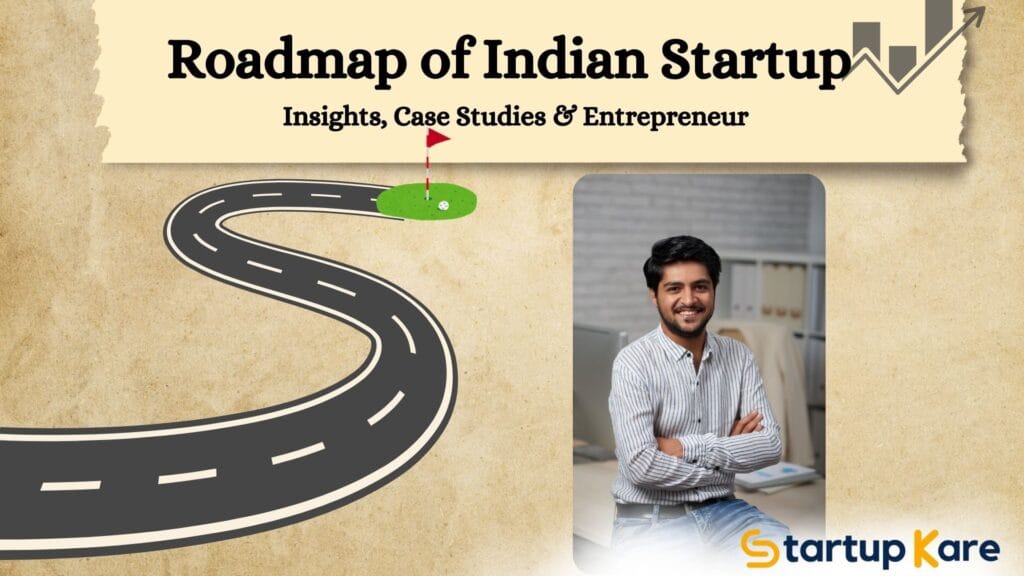
India is home to the world’s 3rd-largest startup ecosystem, and in this blog we will provide the whole roadmap of indian startup which is growing annually at 12–15%. Yet, transforming an idea into a stable business requires strategic support, mentorship, strong market validation, and compliance. This blog dives into real startup examples, mentorship frameworks, government support, and a step-by-step roadmap for entrepreneurs.
Top Indian Startups Roadmap: Vision, Unique Ideas & CMP (Clarified)
Notable Examples:
Raphe mPhibr (Defence Drones)
- Founded in 2017. Built a homegrown drone-tech platform with in-house R&D—no foreign partnerships.
- Delivered 1,000+ drones to Indian armed forces; built testing infrastructure reducing engine development by 15 months; raised $145M total.
- USP: Indigenous, high-altitude, swarm-capable defense drones with in-house expertise spanning AI, composites, electronics.
Licious (Foodtech & Supply Chain)
- During the pandemic, tripled business in first 3 months, then focused on stabilizing cost and supply chain resilience over 18–24 months.
- USP: Fresh meat supply chain with AI demand forecasting and vertical integration.
Pixxel & Dhruva Space (Space Tech)
- Two Indian startups successfully launched satellites via SpaceX’s Falcon 9—marking India’s rising private space tech capabilities.
- USP: Private Indian satellite deployment capabilities in space services.
Urban Company
- Named “Startup of the Year” by ET Startup Awards 2025 for decade-long innovation in home services.
- USP: On-demand home services platform with trust, scale, and quality control.
Spiritual Tech Startups (Online Rituals)
- Over 950 spiritual tech startups enabling digital rituals; raised $50M in 2024, projected to reach $168.8M by 2030.
- USP: Digitizing religious traditions with livestreams and AI-enhanced experiences.
Virgio (Sustainable Fashion) Startup Roadmap
- Founded by ex‑Myntra CEO Amar Nagaram in 2022. Pivoted from fast fashion to circular, sustainable models; earned PETA Vegan recognition; launched retail stores; partnered with IIFA in Jaipur.
- USP: Fashion tech blending sustainability and accessibility for Gen Z.
Common Challenges Faced by New Entrepreneurs & How to Overcome
1. Defining Your Vision & USP
- Understand your unique value—what problem do you solve differently? Eg: Raphe’s indigenous drone tech.
2. Building Credibility & Validation
- Get early signals: pilots, prototypes, small clients. Engage in accelerator programs like Games24x7’s TechXpedite.
3. Market Analysis & Product Valuation
- Use data-driven tools to define TAM, customer segments, pricing models.
4. Registration & Compliance
- Register via Startup India, get DPIIT recognition, and secure necessary certifications for legal operation.
5. Funding, Grants & Loans
- Indian schemes include:
- Startup India Initiative
- Startup India Seed Fund Scheme (SISFS) with ₹945 crore funding for prototypes and go-to-market.
- Others: Credit Guarantee, Atal Innovation Mission, STPI, Mudra Loans, ASPIRE.
6. Mentorship & Support
- Seek mentors from established consultants like StartupKare.
- Leverage accelerator programs .
7. Sustainable Growth Strategy
- Don’t just ride pandemic or hype cycles. Build strong supply chains like Licious did.
- Focus on operational efficiency and scalability.
8. Technology & Innovation Integration
- Embrace AI where relevant:
- Fintech startups use GenAI for customer service and operations.
- Ed-tech startups like EdgeUp use AI models to personalize learning.
The Roadmap of Indian Startups: From Startup to Stable Business
| Stage | Key Actions |
|---|---|
| 1. Vision & USP | Identify core problem, define unique proposition (your “CMP”) |
| 2. Validation | Build minimal prototype of your product and service, get pilot users, refine with feedback |
| 3. Registration | Register business, obtain DPIIT recognition, secure domain/brand rights |
| 4. Mentorship | Join accelerators (e.g., TechXpedite), connect with consultants |
| 5. Market Analysis | Research competitors, validate demand, anticipate pricing & customers |
| 6. Funding | Apply for government schemes (Startup India, SISFS etc.) |
| 7. Scaling Operations | Build supply chain, hire, ensure cost efficiencies (like Licious) |
| 8. Tech Integration | Automate via AI tools (GenAI in fintech or personalized learning) |
| 9. Compliance & Reporting | Ensure certifications, legal compliance, financial reporting |
| 10. Brand & Growth | Market your USP; emphasize sustainable, trust-based, or tech-led edge |
FAQ: Common Questions for New Entrepreneurs for who want to know the Roadmap of Indian Startups
Q: How can I get funding as a new startup?
Apply for DPIIT-backed schemes: Startup India Seed Fund Scheme, Credit Guarantee Scheme, Atal Innovation Mission, and more. You can also enter accelerators with funding and mentorship.
Q: Do I need mentorship or a consultant?
Yes—mentors or consultants help with strategy, legal setup, scaling, and networks. Consultants like StartupKare or accelerators like TechXpedite (by Games24x7) are invaluable.
Q: Must I integrate technology like AI?
Only if it adds value. Many successful startups use AI for operations, personalization, or chatbots—e.g., fintech GenAI, ed-tech personalization with proprietary models.
Q: How do successful startups maintain stability?
Focus on resilient operations, cost control, and customer trust. After rapid pandemic growth, Licious rebuilt structural robustness over nearly two years.
Q6: Where can I find inspiration from Indian startup success?
Follow startups like Raphe mPhibr (defence drones), Pixxel & Dhruva Space (space tech), Urban Company (home services), and Virgio (sustainable fashion) for different models of success.
Final Thoughts on Indian Startup Roadmap
- India’s vibrant startup ecosystem is booming, but sustainability requires strategic execution.
- Define your vision and USP clearly.
- Use government schemes and mentorship to strengthen your foundation.
- Leverage tech where it supports growth—not just as a gimmick.
- Build operational resilience for long-term stability.
